编制机构:雅昌艺术市场监测中心(AMMA)
胡项城个人项目“陌生者的行程II”于“第十二届艺术与设计博览会”xiàn chăng单元亮相。此次由香格纳画廊推出的胡项城个人项目“陌生者的行程II”展期为11月12日至11月16日。项目在西岸艺术中心A馆内近1000平方的展区内发生,呈现胡项城自上世纪九十年代至今的部分绘画、雕塑及大型装置作品。项目搭建过程也作为艺术与设计创新未来教育博览会的特别篇章在10月31日至11月2日呈现。
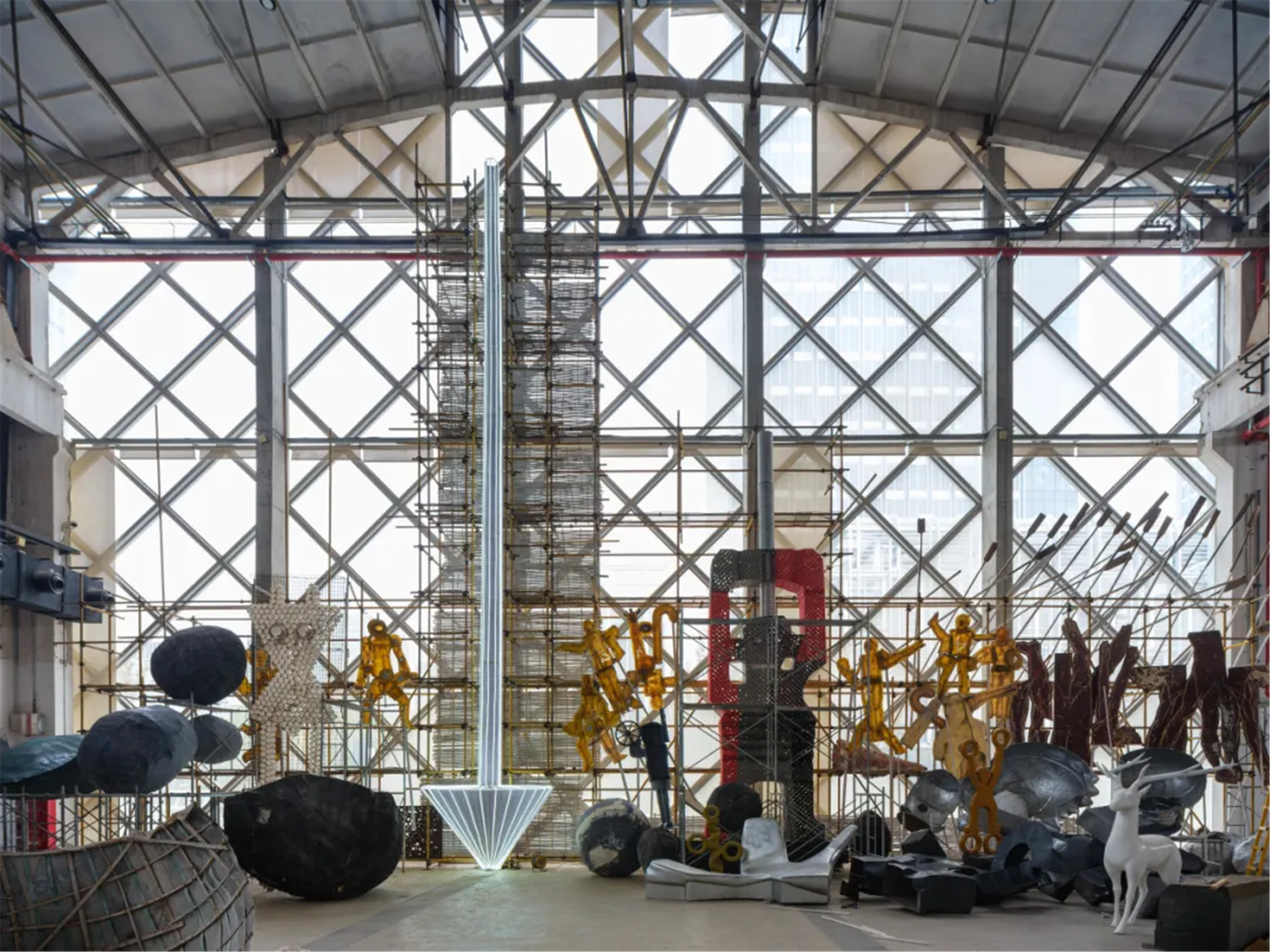
胡项城个人项目“陌生者的行程II”2025西岸艺博会现场
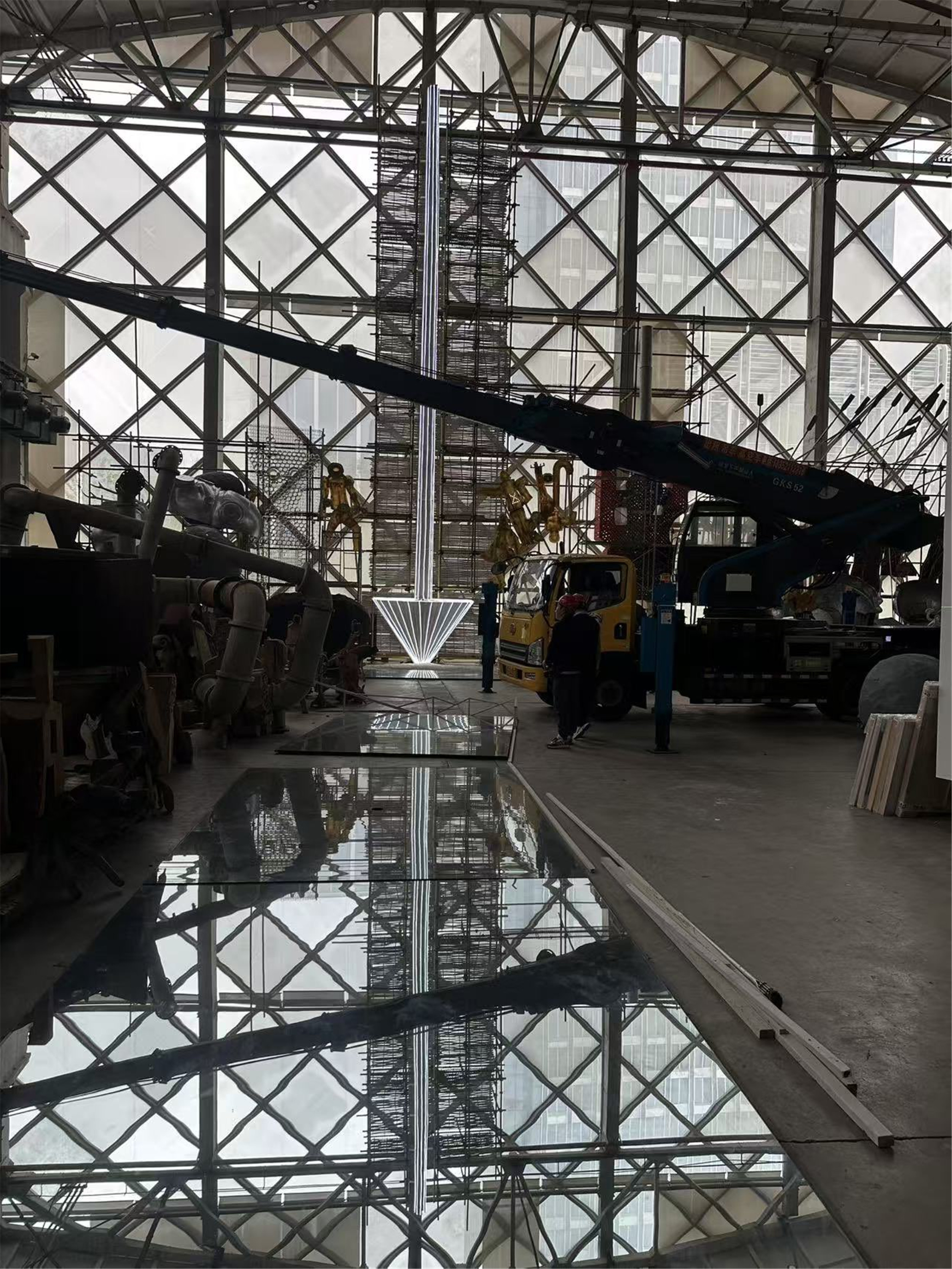
胡项城个人项目“陌生者的行程II”2025西岸艺博会现场
胡项城"陌生者的行程"之二观感
作者:张子康
在当今以商业效益为主导的博览会生态中,西岸艺术中心为众多艺术家提供了十分重要的实验空间,香格纳画廊在推动新老艺术家的多元表达是认真在做。举办胡项城"陌生者的行程"这样一场在地性的展览,其做法本身就非常值得点赞。它能够引导人们去深入思考,并构建起一个学术性的话题,这本身也是对商业未来的一种有力推动。它并非只看眼前利益,而是指向未来发展的整体连接,这一点非常可贵。
其次,艺博会请胡老师来呈现这个展览,跨越了我们多年的文化思考。通过他的成长轨迹与时代的链接,观众在观看展览时能清晰地感受到这一点。可以看到,这样一位富有创造力的艺术家,在不断构建新话题、不断向观众提出问题、引发思考。更重要的是,他能够将个人连接的多元审美经验,整合到一个宏大的展览体系中,构建出一个独特的叙事结构。观看时,总能带来惊喜,也让我们得以从多重视角去认识和理解艺术。
此外,这个展览对于观众而言,每个人都能从中连接自己的经验。尤其是因为它紧密链接了我们这个时代的整体社会图景,这种持续的、互动式的链接,能让观众在交流与反思中,形成对当下的理解、对过去的重新认知,以及对未来的想象。因此,这个展览确实值得大家好好观看。
值得一提的是,展览在视觉呈现上并没有采用商业常见的“美化”标准,反而呈现出一种如工厂般的质朴感。这种鲜明的对比,也形成了一种独特的张力,引人深思。
总的来说,这是一个非常值得推崇的展览,它以深刻的议题和独特的呈现方式,为观众带来丰富的启发。
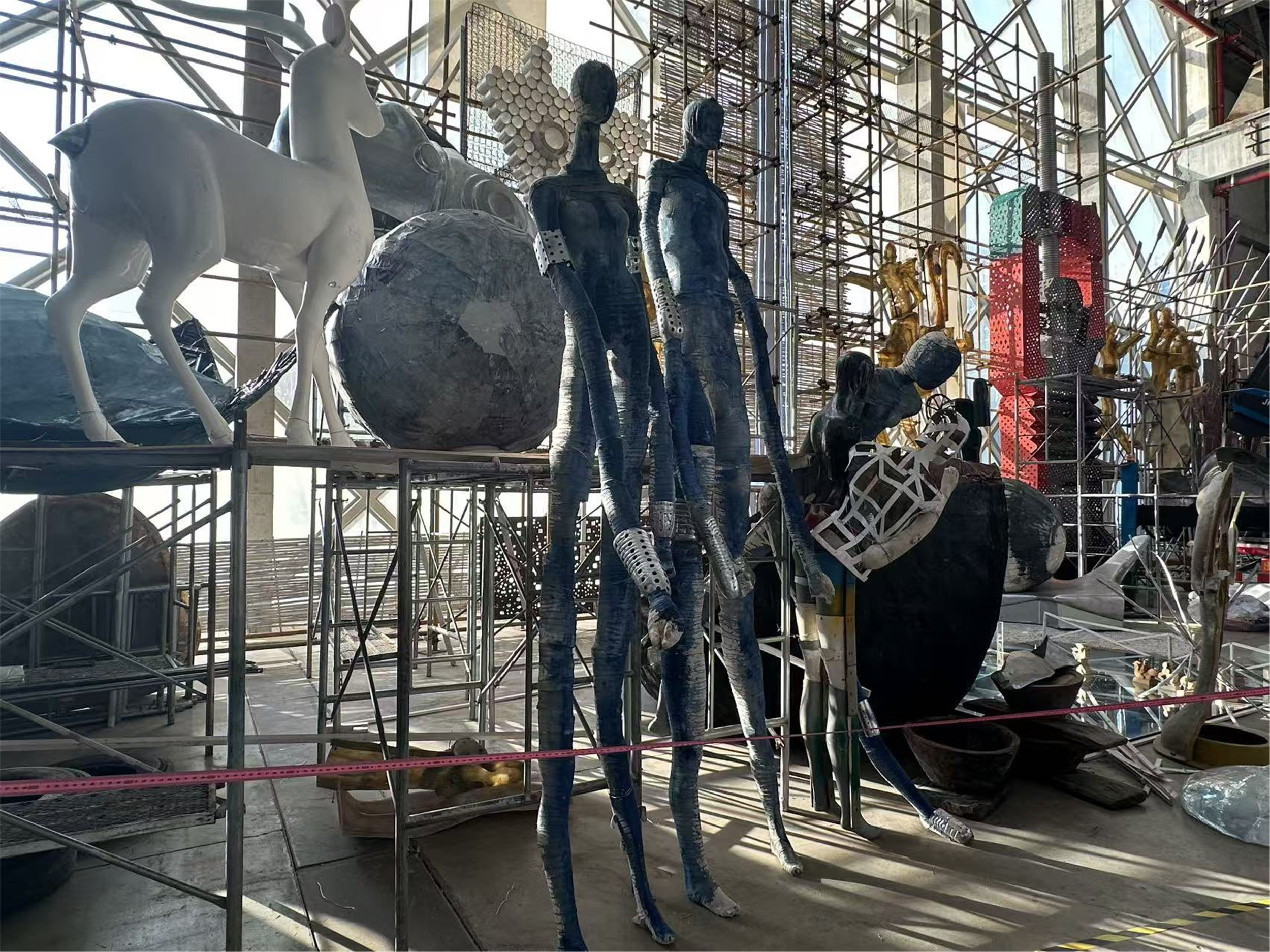
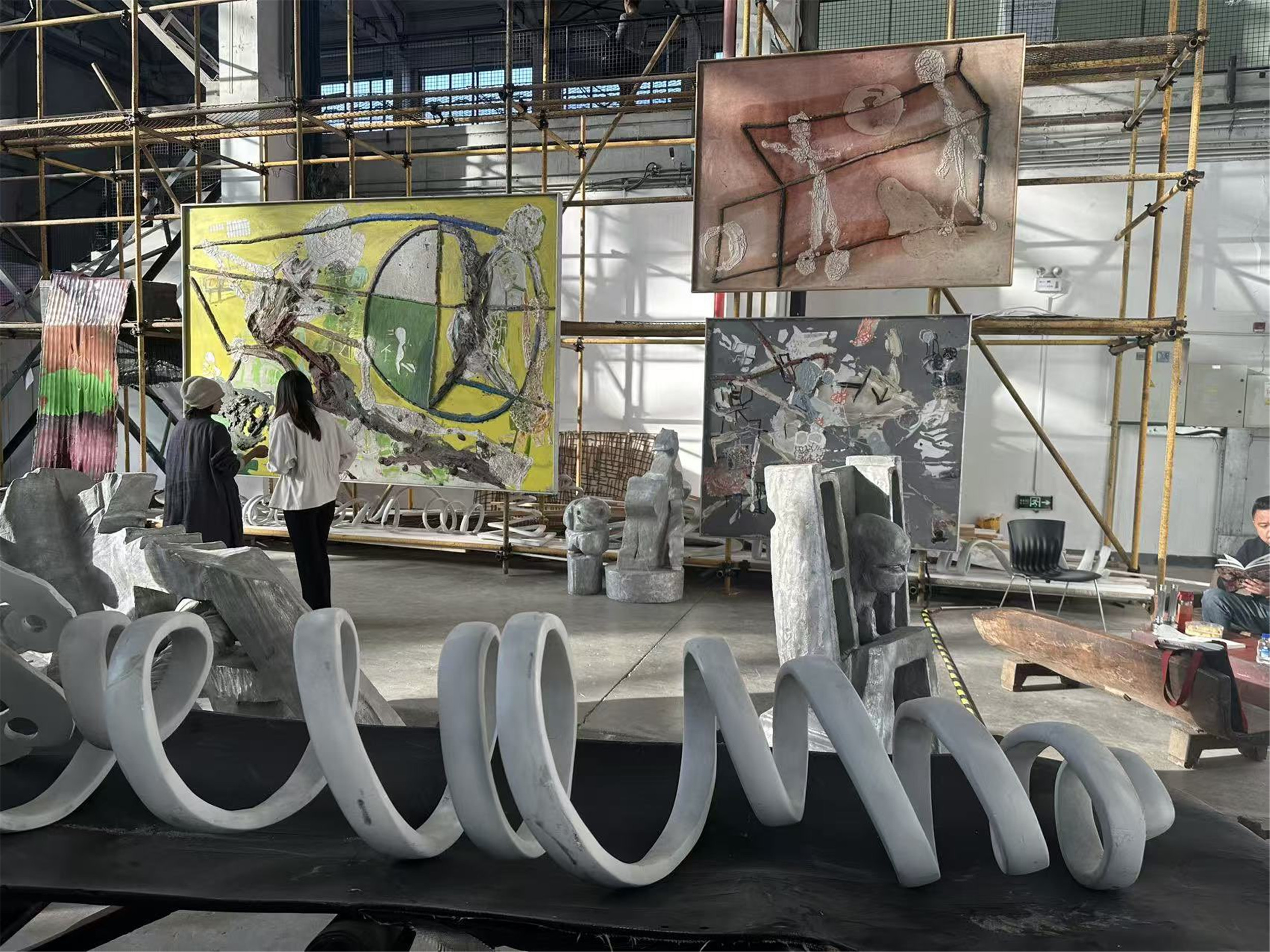
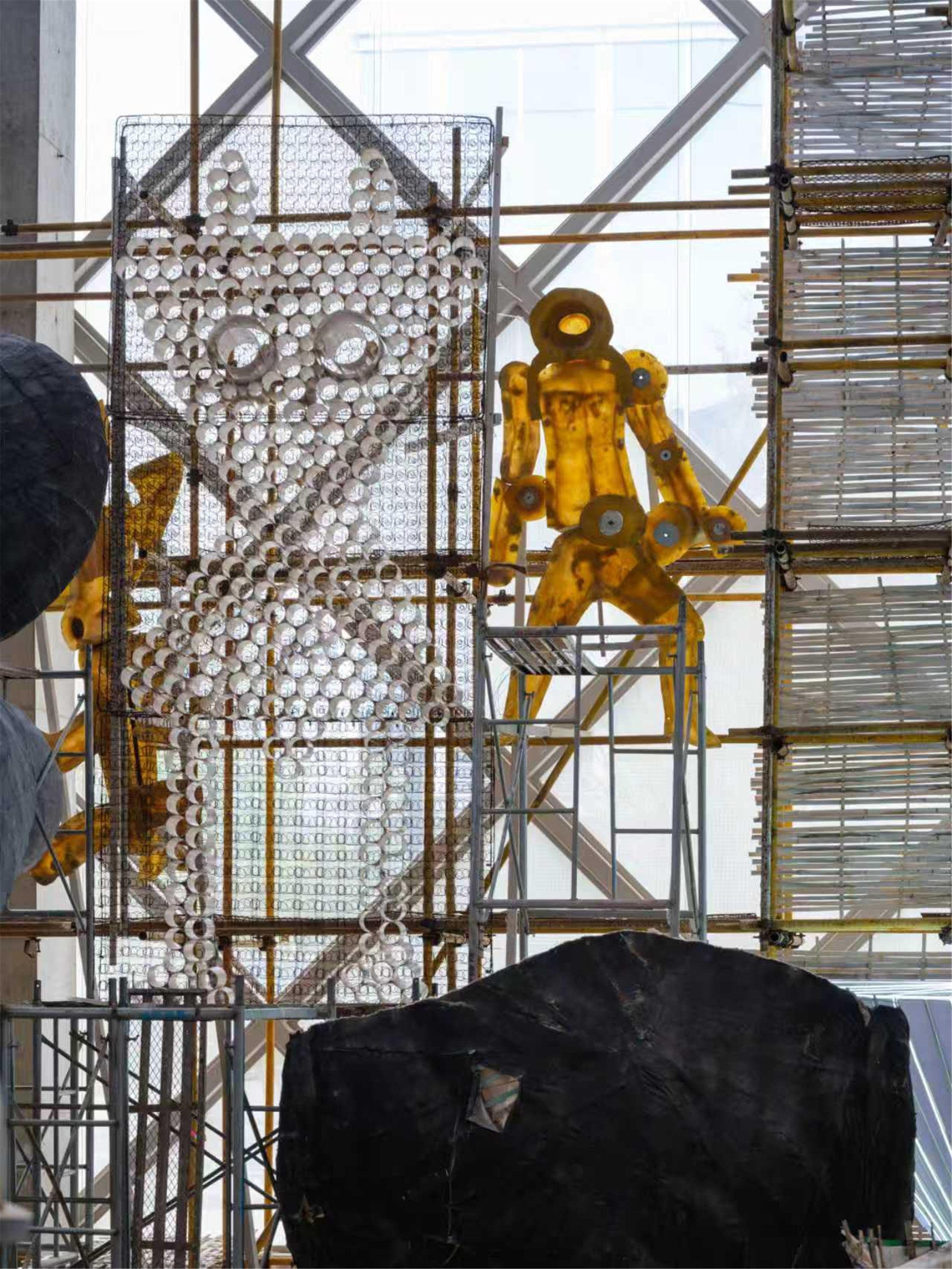

胡项城个人项目“陌生者的行程II”2025西岸艺博会现场
在《陌生者的行程》中定义自身存在的意义
作者:木也
2007年由高士明策展的胡项城个展《陌生者的行程》在上海美术馆开幕。从2007年至今在这段不太长的时间里世界却发生了根本性质的巨大变化。
如果说那时期讨论思考的问题基本还在人类社会范围以内,那么如今,我们所面对的“陌生”已徒然升级。地球上出现了自然人类以外的智能体,人机合一甚至更进一步至碳硅共存,或者完全可能进化到有自主意识硅基生命。面对这种新的陌生快速而很难改变的前景,自然人类还能做什么?人类存在的意义何在?
胡项城的《陌生者的行程》之二則是通过多元艺术表达,探讨这个无法回避的问题
从“人类社会内部”的陌生,到“人类本体之外”的陌生
之一讨论的“陌生”更多是文化、社会、意识形态层面的“他者”;而之二的“陌生”,是真正异质性的、来自我们创造物却可能超越我们的“智能体”。这不仅是新的旅行目的地,更是旅行者自身身份的危机。
自然人类还能做什么?
——在算法秩序外,开辟“无序”疆域
人的情感、直觉、偶发、解构、重组,正是答案的核心。在一个由数据和算法驱动的、追求极致效率与优化的数字世界里,人类 “不经济”、“非理性”的特质,反而成为了我们最坚固的堡垒和最后的疆域。
成为“意义的创造者”,而非“问题的解决者”
在艺术领域AI可以从模仿人类转而创作其特有的不符合以往人类美学规则的音乐、绘画,甚至诗歌。但它很难回答“我为什么要创作”、“这幅画为何在此时此刻震撼了我的灵魂”。艺术的价值,从来不只是最终的“作品”,更是作品背后那个独特的、活生生的“人”的视角、情感与生命体验。 “一人一世界,一事一世界”,正是这种不可复制的、基于个体生命历程的意义生成过程。
AI的本质是寻找模仿模式、预测和建立数字秩序。而人类艺术与思维的伟大之处,恰恰在于拥抱偶然、颠覆並驾驭,然后再一次破解秩序、从混沌中创造新生的能力。胡项城强调人类的理性可以用来创造AI这样的有序工具,而人类的非理性则用来确保我们不被这种秩序所吞噬。 我们负责提出疯狂的问题,进行不合逻辑的跳跃,甚至主动走向“陌生”的领域。
人脑並不用大量电力芯片却具有极快的算力,我们的大脑更像一个高度复杂的、以低能耗实现高维度的情感和体验驱动的“关联性网络”。我们能在一幅画中看到一生的回忆,在一段音乐中感受到整个宇宙的共鸣。这种将极其庞杂的、跨纬度的信息瞬间整合并产生深刻情感与哲学领悟的能力,是目前AI难以企及的。
AI可以分析悲伤,但无法“感受”悲伤。人类存在的意义,就在于这种活生生的、无法被完全量化的体验——爱的狂喜、失去的痛楚、面对未知的恐惧与好奇。自然人类的角色不是与它在算力和效率上竞争,而是成为它的强大角力者,严谨逻辑外的诗意,确定轨迹外的冒险,永恒稳定外的生老病死与爱恨情仇。
艺术创作和人生体验,就是一个不断破解外部世界和内心世界的密码,并在这个过程中让情绪和思想获得释放的过程。这个过程本身就是目的,而非达到某个完美结果的工具。
人的诞生並非偶然,人的基因中与宇宙最深远处有着密切的联系”,这是一种微妙的真相。我们每个人,都是一个微小的宇宙,通过我们的情感、直觉和创造,与更大的自然、历史、文化和未知的宇宙产生着深刻的共鸣与联结。
胡项城在《陌生者的行程》中所探讨的,或许正是一种永恒的人类境况:我们是自身的陌生者,也永远在走向外部陌生的旅途中。《陌生者的行程》从之一到之二,不仅是陌生对象的改变,更是人类自我定位的深化。其核心意义始终如一:存在的价值不在于抵达终点,而在于这趟永不停歇的、在破解陌生中体验和创造意义的生命过程本身。
而AI的出现,只是让这场行程变得更加陡峭和壮阔。人类的伟大,或许不在于我们能创造一个多么完美的世界,而在于我们永远保有在混乱中寻找真美、在无常中创造意义、在陌生的旷野中依然前行的勇气。
《陌生者的行程》正是人类存在最深刻的价值的体现。
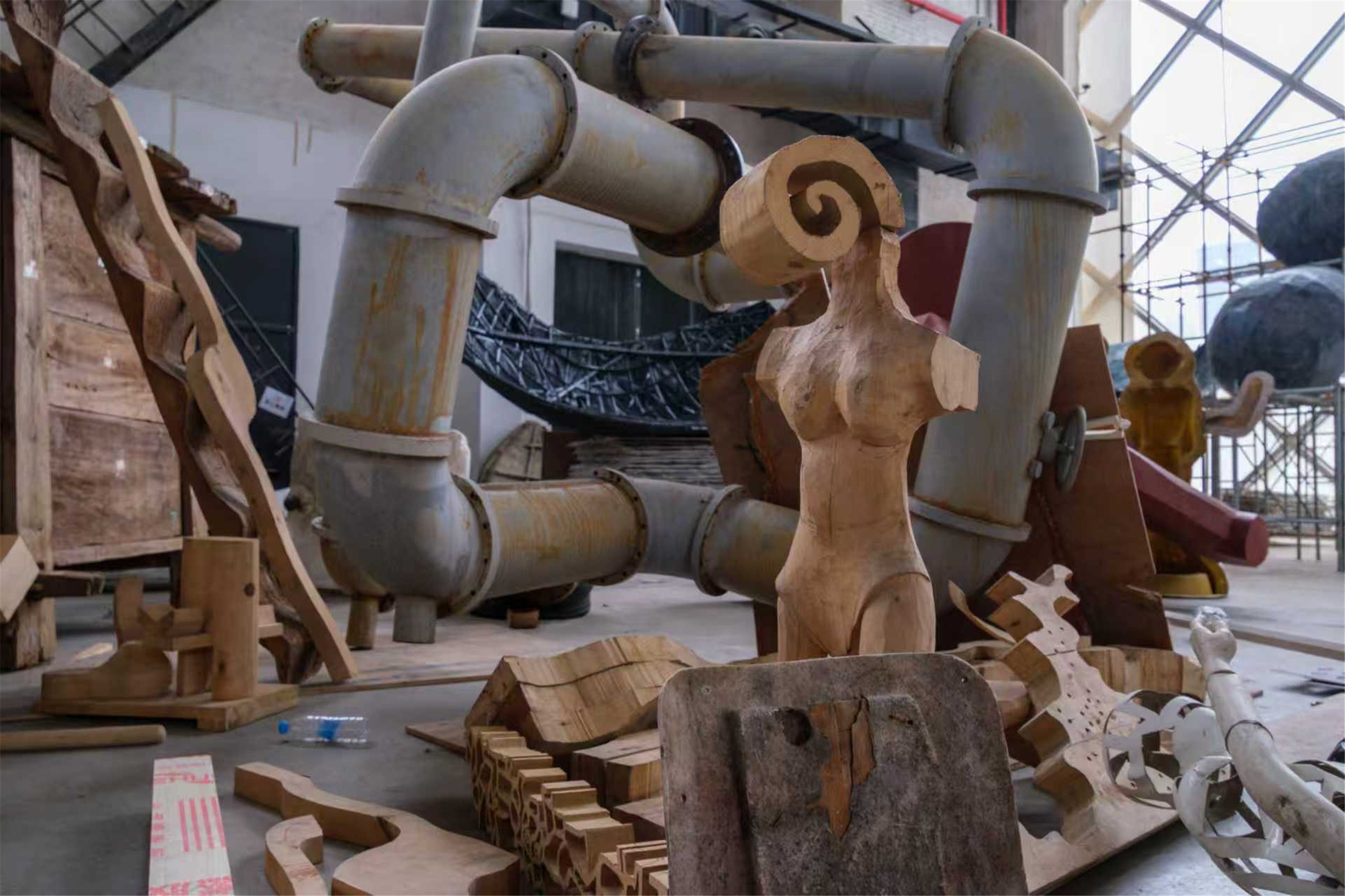
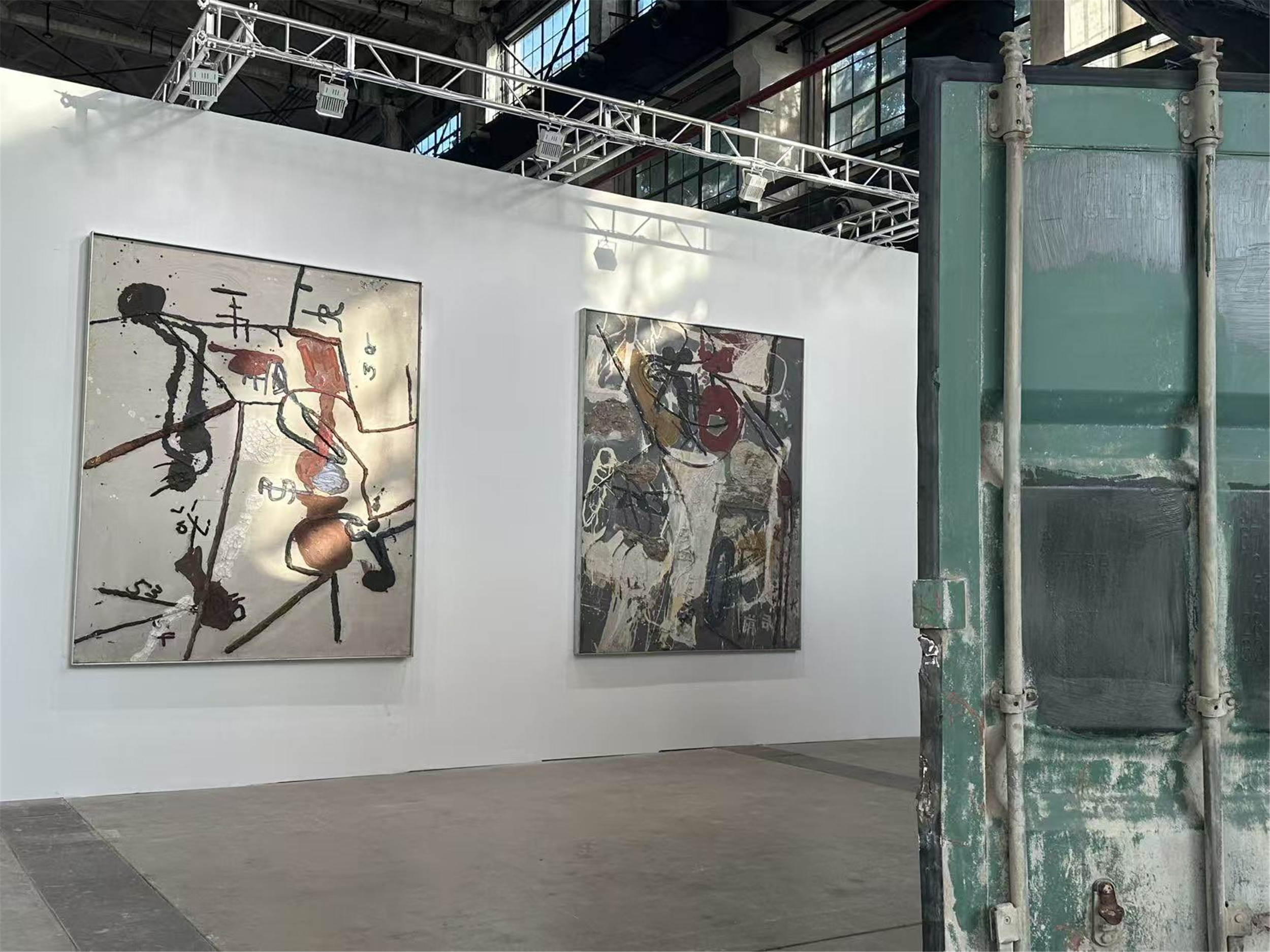
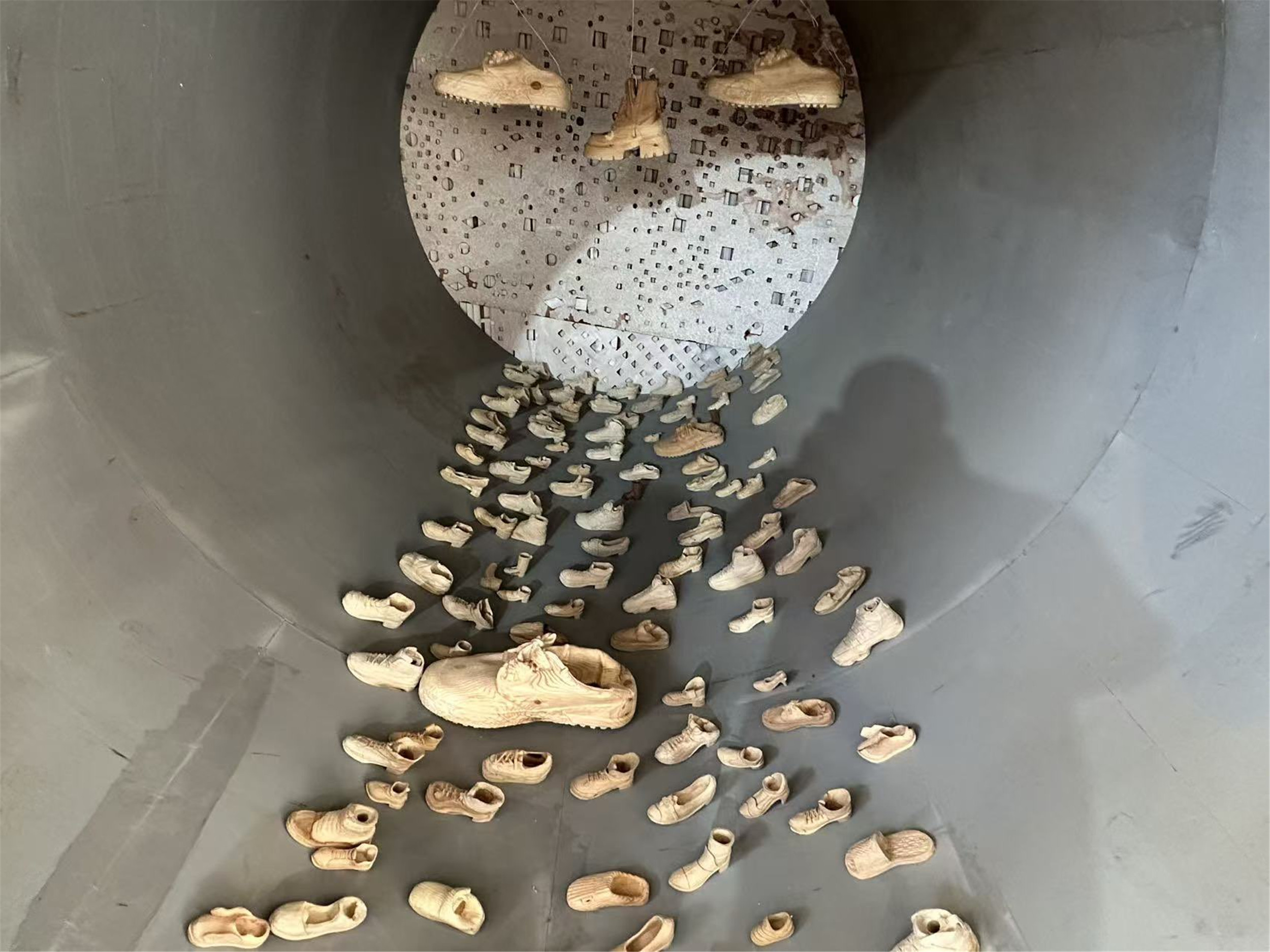

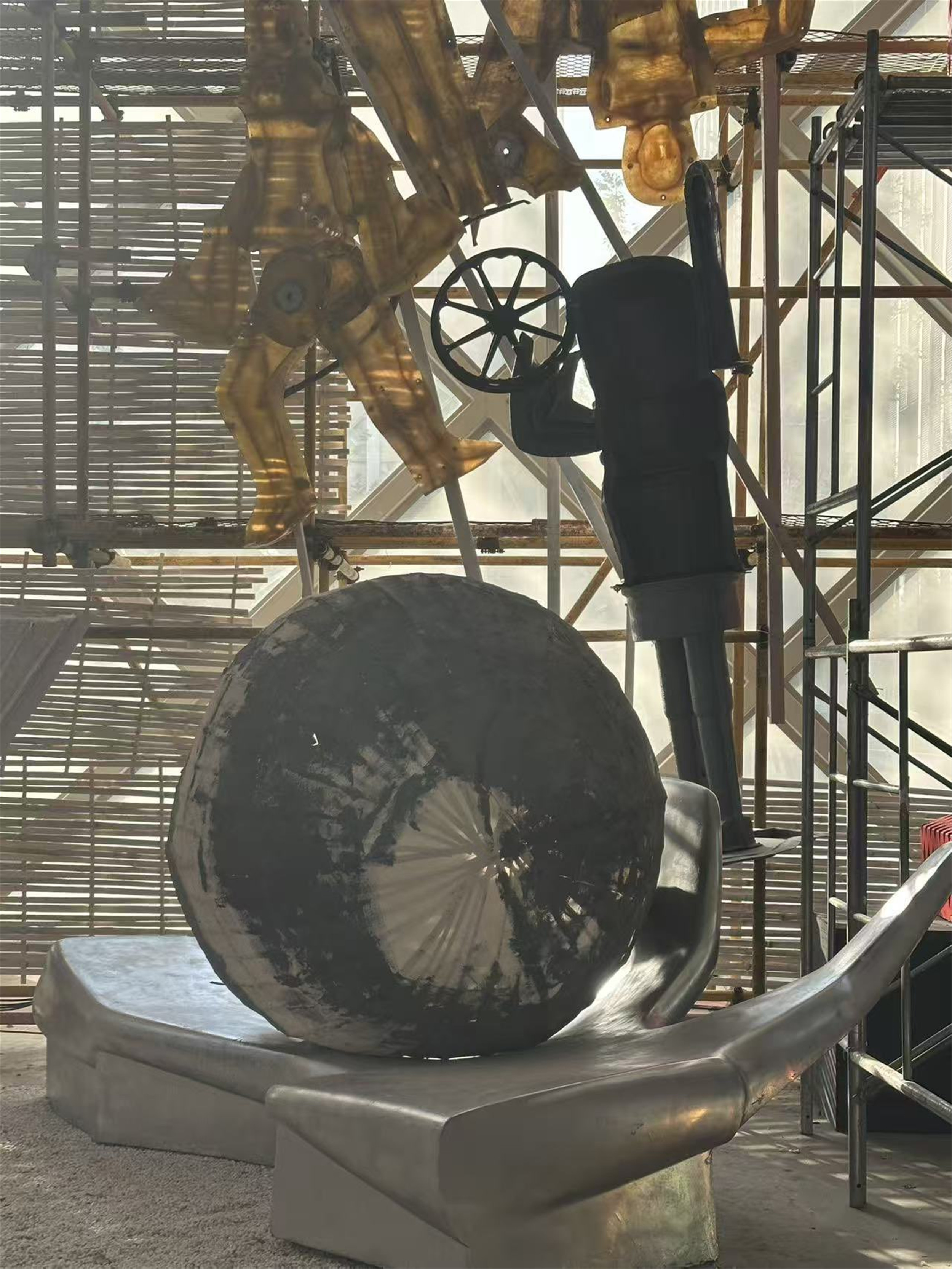
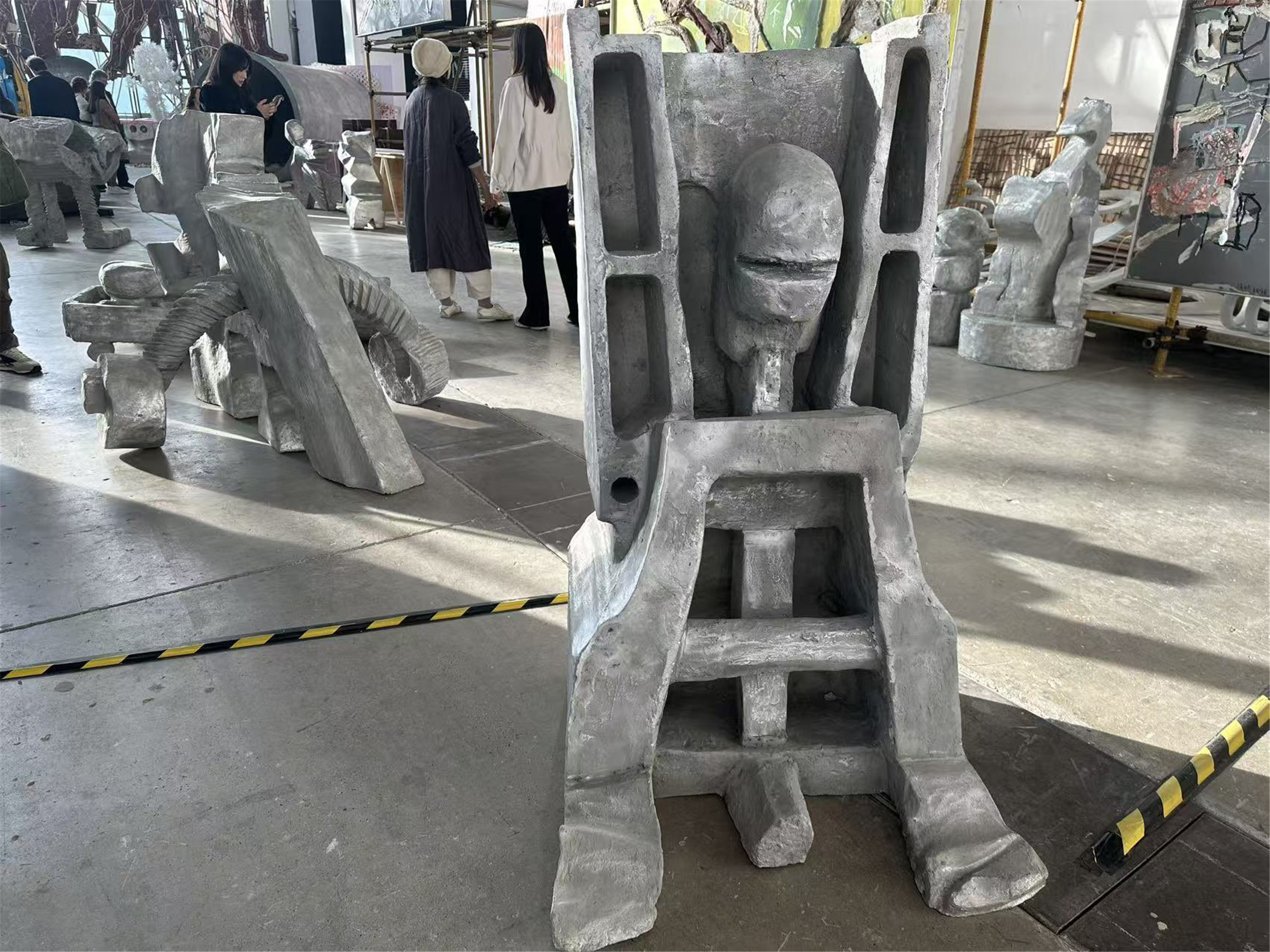
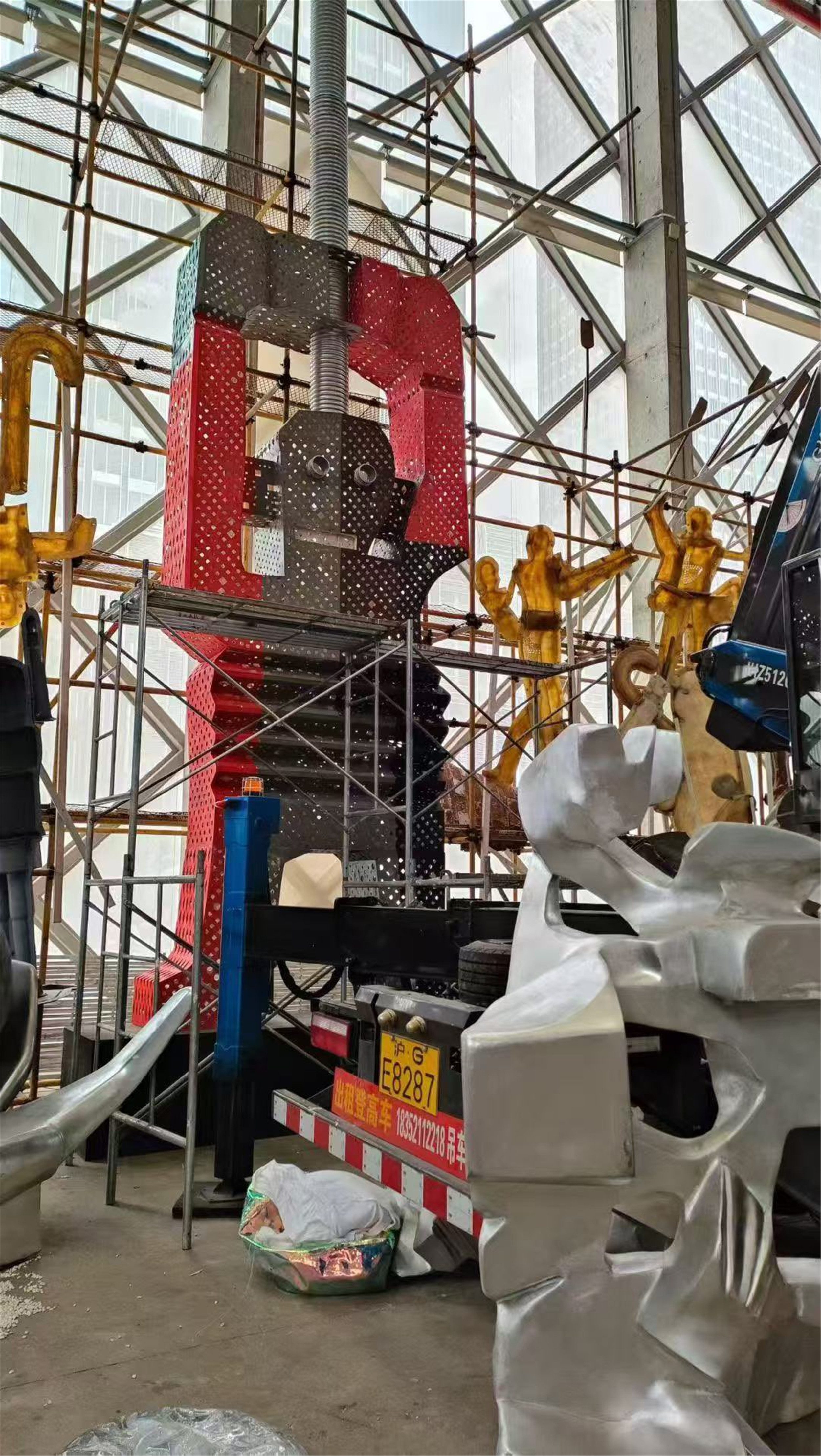
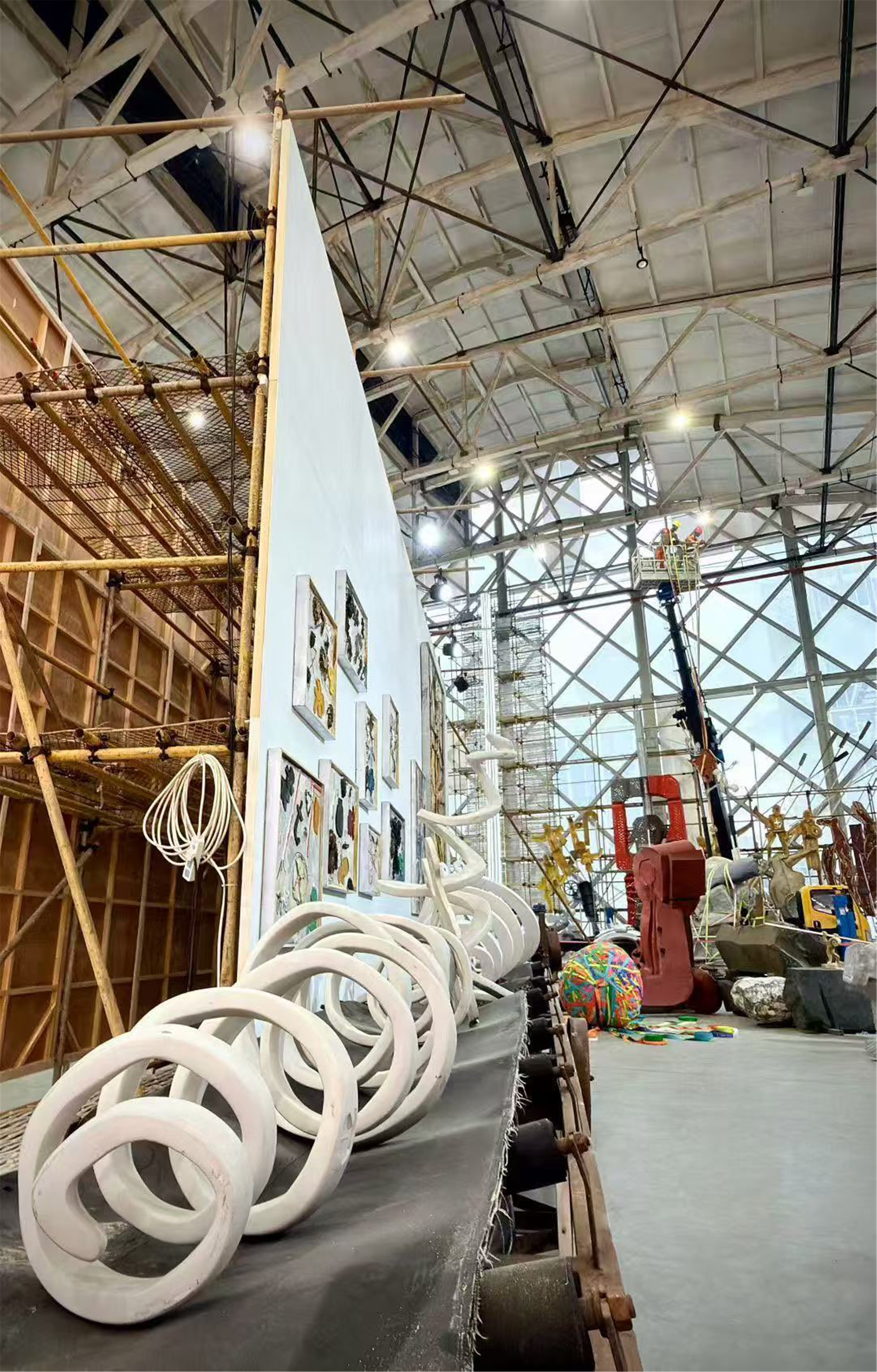
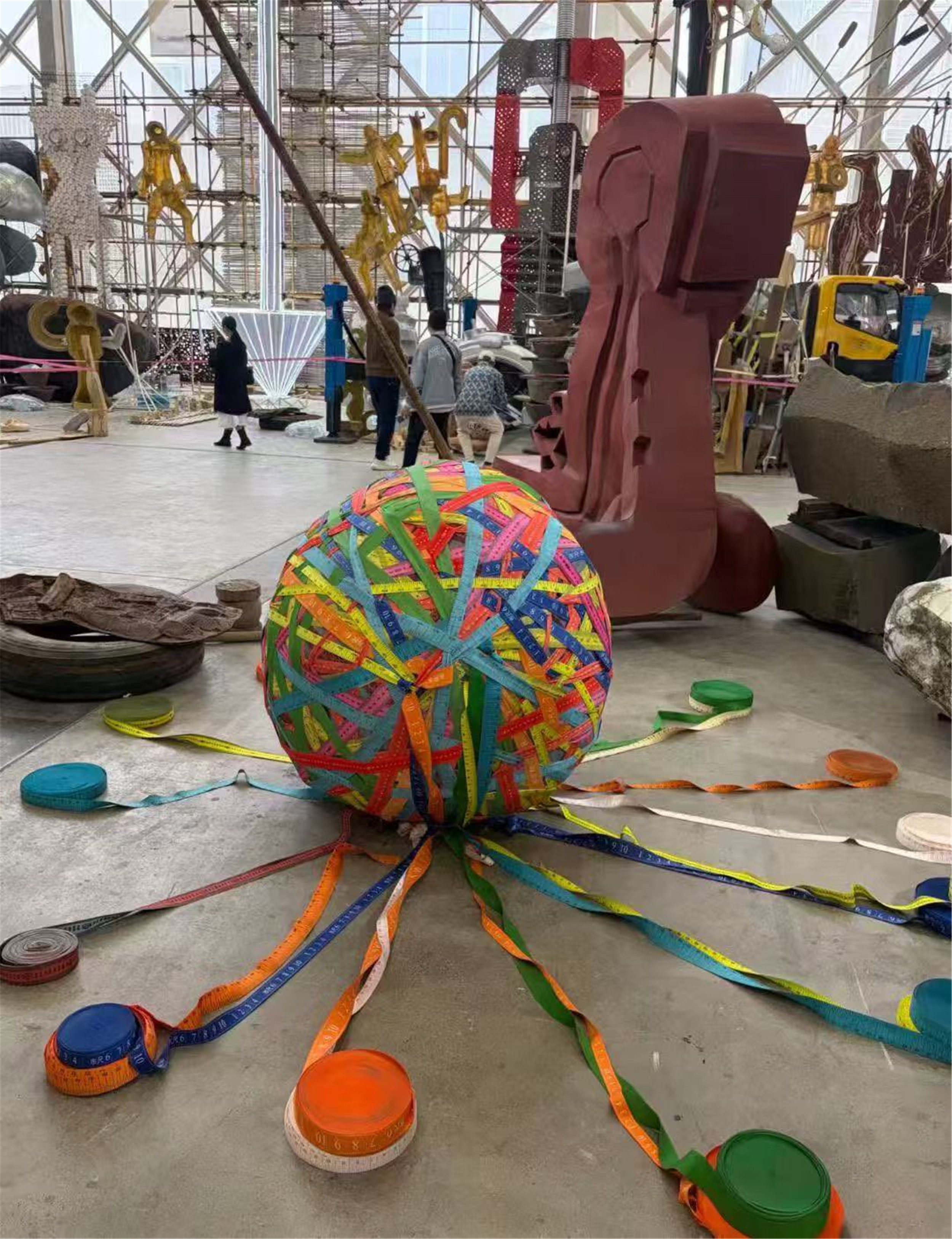
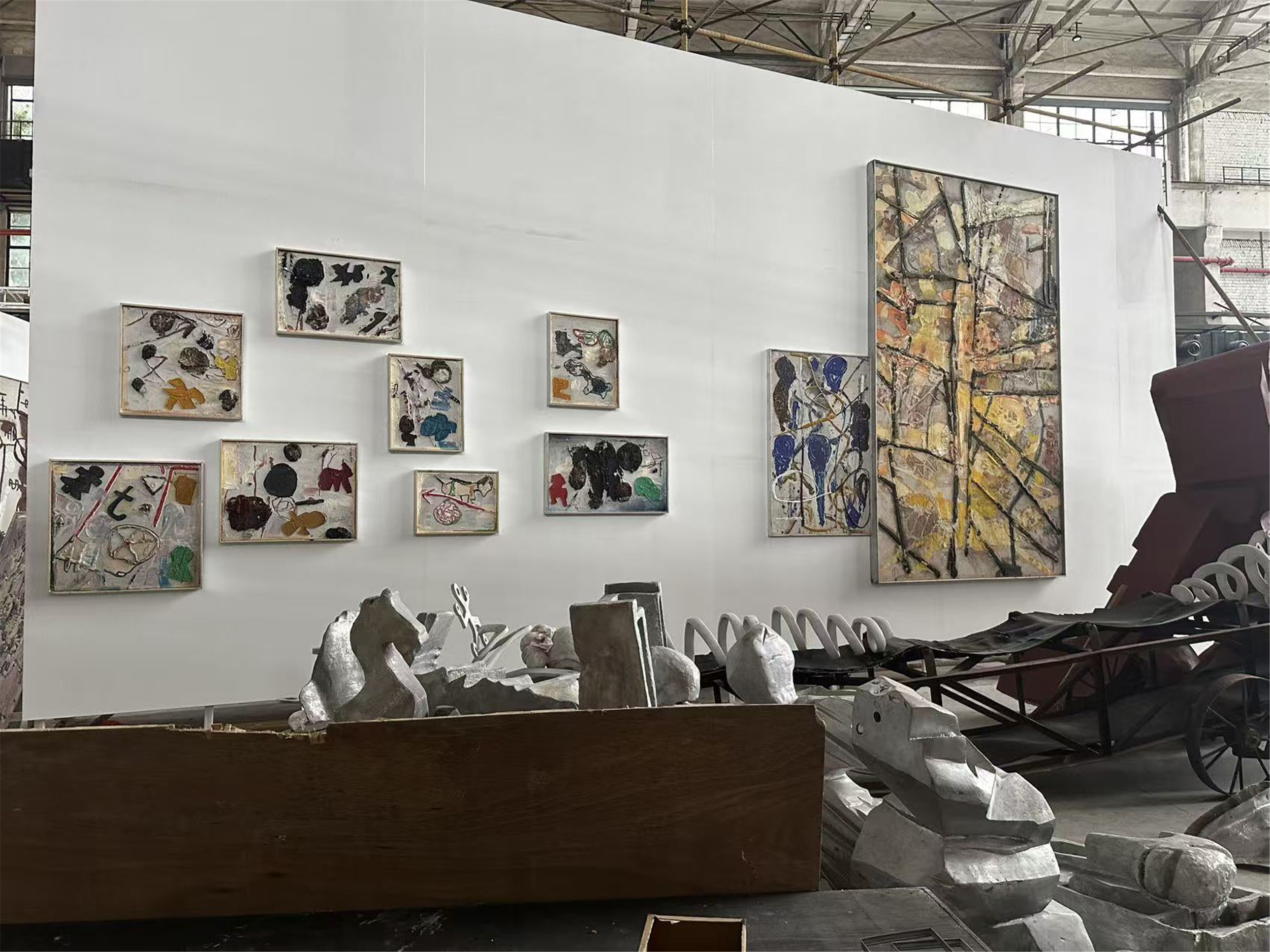
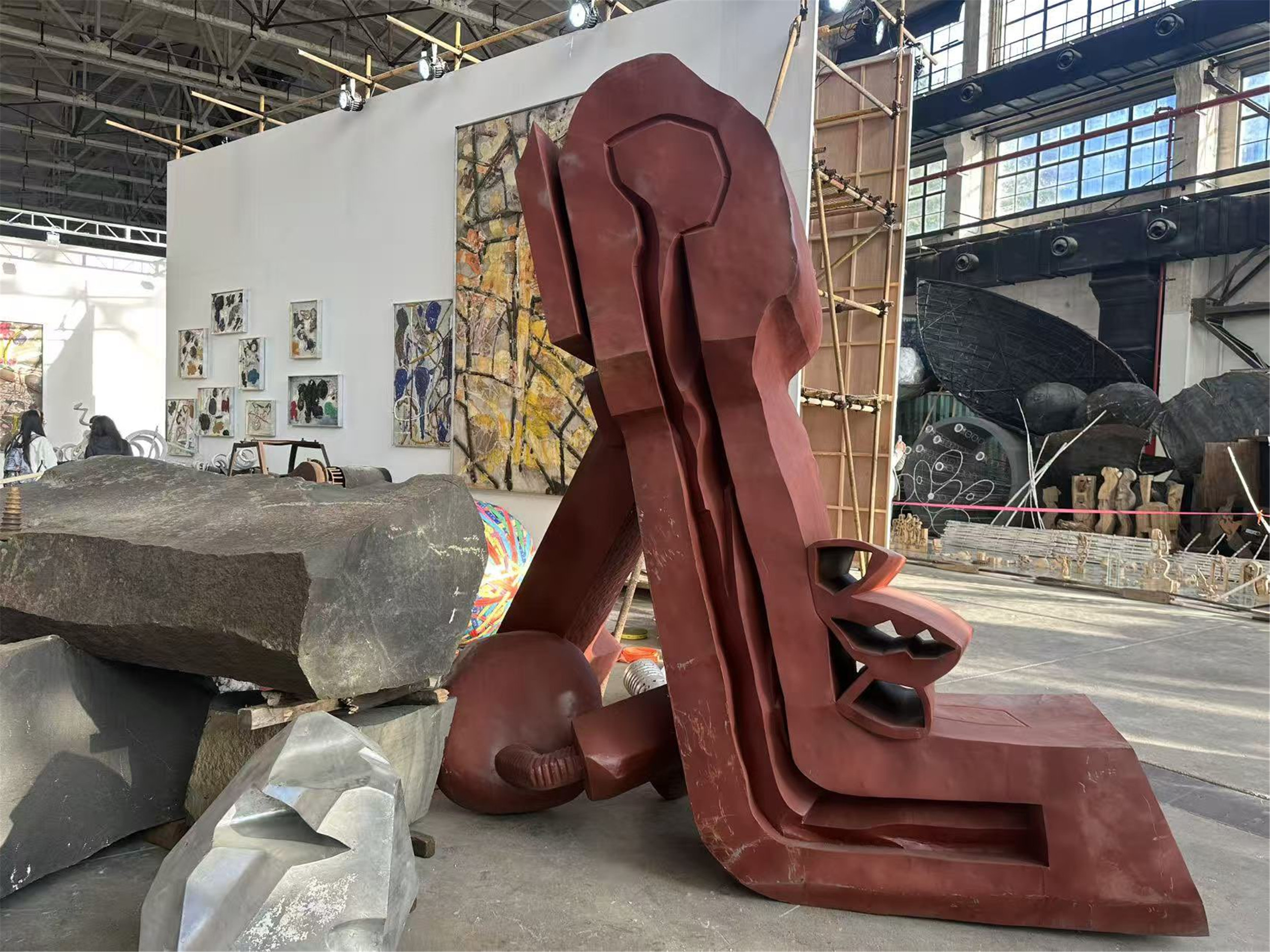


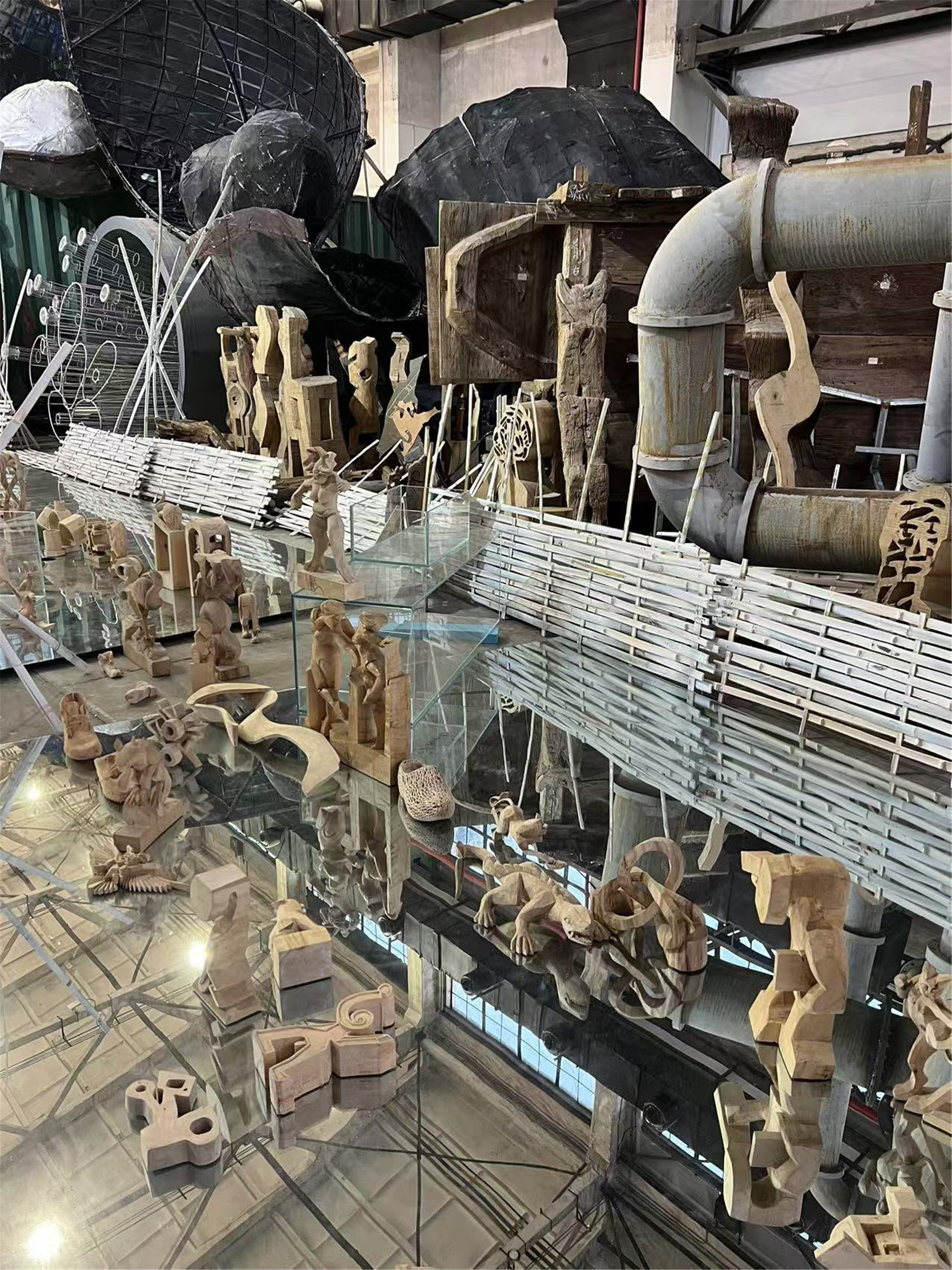
胡项城个人项目“陌生者的行程II”2025西岸艺博会现场
英文:
Define the meaning of one's own existence in "The Journey of the Stranger"
In 2007, Hu Xiangcheng's solo exhibition "The Journey of the Stranger" curated by Gao Shiming opened at the Shanghai Art Museum. In the relatively short period of time since 2007, the world has undergone fundamental and significant changes.
If we say that the issues discussed at that time were basically within the scope of human society, then today, the "stranger" we face has been upgraded. Intelligent beings other than natural humans have appeared on Earth, and human-machine integration has even gone further to carbon-silicon coexistence, or it is entirely possible to evolve to silicon-based life with autonomous consciousness. What can natural humans do in the face of this new, unfamiliar, rapid, and difficult-to-change prospect? What is the meaning of human existence?
The second part of Hu Xiangcheng's "The Journey of the Stranger" explores this unavoidable issue through multiple art forms.
From the strangeness of "inside human society" to the strangeness of" outside human body"
The "stranger" discussed in one of them is more of an "other" at the cultural, social, and ideological levels; And the second "strangeness" is the truly heterogeneous "intelligent entity" that comes from our creations but may surpass us. This is not only a new travel destination, but also a crisis of the traveler's own identity.
What else can natural humans do?
—Open up the “disorder” territory outside the algorithm order
Human emotions, intuition, chance, deconstruction, and reorganization are the core of the answer. In a digital world driven by data and algorithms that pursue extreme efficiency and optimization, humanity's "inefficient" and "irrational" characteristics have become our strongest fortress and last frontier.
Become a "creator of meaning" rather than a "problem solver"
In the field of art, AI can change from imitating humans to creating its own unique music, paintings, and even poetry that do not conform to previous human aesthetic rules. But it is difficult to answer the question, "Why do I create?" and "Why does this painting shock my soul at this moment?" The value of art is not only the final "work", but also the perspective, emotion and life experience of the unique and living "person" behind the work. "One person, one world, one thing, one world," this is the irreproducible and individual life process of meaning generation.
The essence of AI is to find imitation patterns, predict and establish digital order. And the greatness of human art and thinking lies precisely in embracing chance, subverting and mastering it, and then once again breaking the order and creating new life from chaos. Hu Jiancheng emphasized that human rationality can be used to create orderly tools such as AI, while human irrationality can be used to ensure that we are not consumed by this order. We are responsible for asking crazy questions, making illogical leaps, and even taking the initiative to enter the "strange" field.
The human brain does not need a large number of power chips, but it has extremely fast computing power. Our brain is more like a highly complex, low-energy, high-dimensional emotional and experience-driven "correlation network". We can see the memories of a lifetime in a painting, and feel the resonance of the entire universe in a piece of music. This ability to instantly integrate extremely complex, cross-latitude information and produce profound emotional and philosophical insights is currently beyond the reach of AI.
AI can analyze sadness, but it cannot "feel" sadness. The meaning of human existence lies in this living, non-quantifiable experience - the ecstasy of love, the pain of loss, the fear and curiosity of facing the unknown. The role of natural human beings is not to compete with it in terms of computing power and efficiency, but to become its powerful competitor, poetry beyond rigorous logic, adventure beyond established trajectories, and life, death, love, hate, and emotions beyond eternal stability.
Artistic creation and life experience is a process of constantly cracking the codes of the external world and the inner world, and releasing emotions and thoughts in the process. The process itself is the purpose, not a tool to achieve a perfect result.
Man's birth is not accidental, and there is a close connection between man's genes and the deepest part of the universe.”This is a delicate truth. Each of us is a tiny universe, and through our emotions, intuition, and creativity, we have profound resonance and connection with the larger universe of nature, history, culture, and the unknown.
What Hu Xiangcheng explores in "The Journey of the Stranger" may be an eternal human condition: we are our own strangers, and we are always on a journey to the unknown outside. "The Journey of the Stranger" from one to two is not only the change of the stranger, but also the deepening of human self-positioning. Its core meaning remains the same: the value of existence lies not in reaching the end, but in this never-ending life process of experiencing and creating meaning in the process of breaking through strangeness.
The emergence of AI has only made this journey steeper and grander. The greatness of humanity may not lie in the fact that we can create a perfect world, but in the fact that we always have the courage to seek true beauty in chaos, create meaning in impermanence, and still move forward in the unfamiliar wilderness.
"The Journey of the Stranger" is the embodiment of the most profound value of human existence.
Author: Mu Ye
艺术家介绍
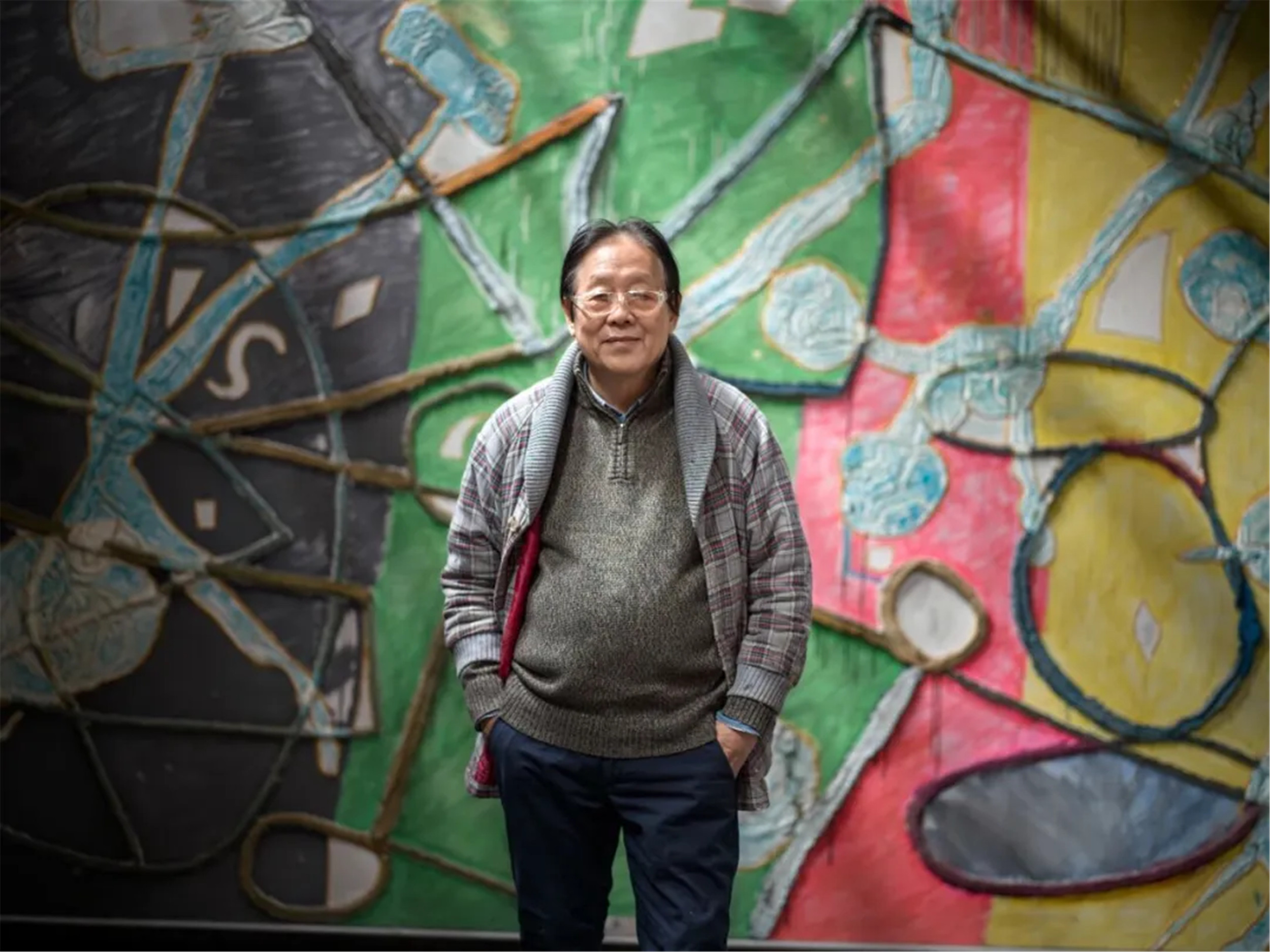
胡项城,作为中国早期当代艺术践行者,致力于当代艺术的探索与研究实验。1950年出生于上海,1976年毕业于上海戏剧学院,毕业后在母校及西藏大学任教。八十年代中期前往日本继续艺术学习和实践,于1991年毕业后开始往返非洲、欧美等城市与乡村考察,并于2000年回到中国后将工作重心转到江南地区乡建实践。在2012年,他完全回归到艺术创作。胡项城的作品受到个人不同时期经历影响,融合了自我深处多重文化、多重身份的研究,不可捉摸的画面成为其作品最重要的特征,也成为他作品里巨大能量的来源。
他的作品曾参加圣保罗建筑双年展,威尼斯开放雕塑展,海牙中国当代雕塑展,上海双年展,横滨三年展,广州三年展等,其中重要个展包括:上海当代艺术博物馆“天天问”、中国美术馆“无始无终的对话”、上海喜玛拉雅美术馆“眼前的远方”、浙江美术馆“鸣相酬”。

网友评论仅供其表达个人看法,并不表明本站同意其观点或证实其描述。